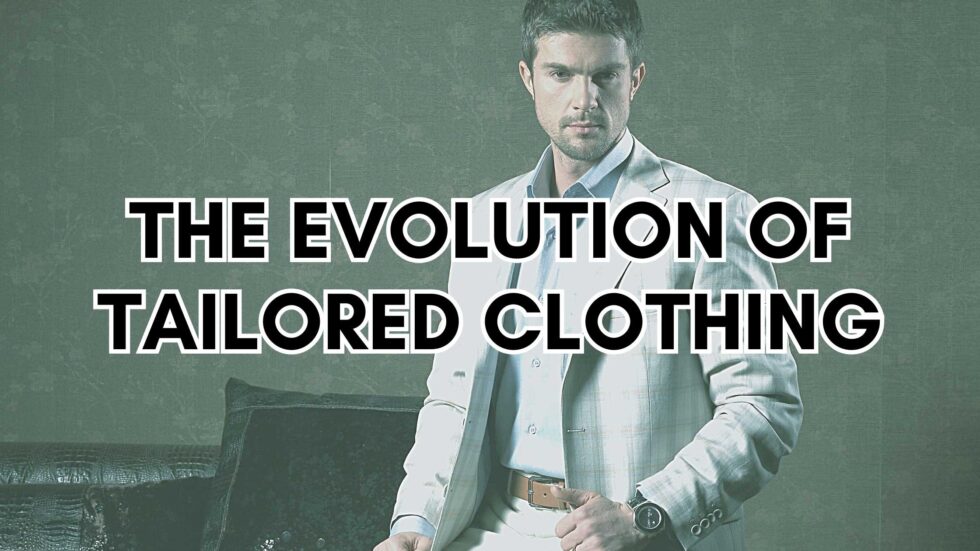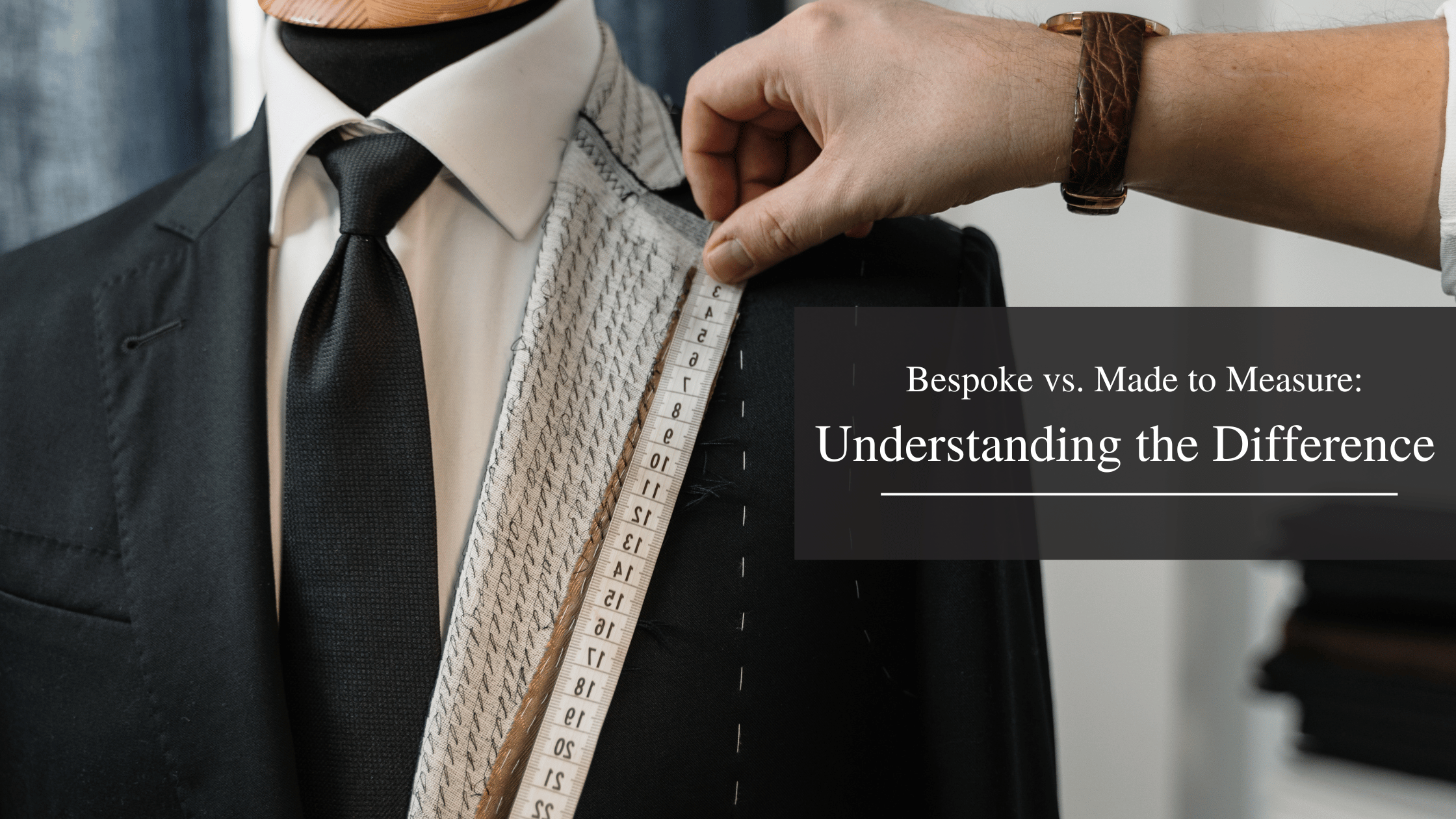
Tailored clothing has a rich history that spans centuries, with styles and techniques evolving over time. From its humble beginnings in medieval Europe to the modern, streamlined styles of today, tailored clothing has undergone significant changes. In this article, we’ll take a deep dive into the history of tailored clothing and how it has evolved over time.
I. The Origins of Tailored Clothing
Tailored clothing has a long and fascinating history that dates back to medieval Europe. In this article, we will explore the origins of tailored clothing and its evolution throughout the centuries.
Medieval Europe
During the Middle Ages, clothing was primarily made by hand and was typically loose and shapeless. However, as society became more affluent, people began to seek more refined and sophisticated garments. This led to the development of tailored clothing, which was designed to fit the body more closely and elegantly.
The first tailored garments were created for men and were designed to accentuate the male form. These garments were often made from wool or silk and were tailored to fit snugly around the body, emphasizing broad shoulders and a narrow waist.
The Emergence of the Tailor’s Guild
As the demand for tailored clothing grew, so did the number of tailors. In the 12th century, the first tailor’s guild was established in London, England. This guild was responsible for regulating the craft of tailoring, setting standards for the quality of workmanship, and ensuring that tailors were properly trained.
Tailors were highly skilled craftsmen who were respected for their ability to create beautifully crafted garments that fit perfectly. They were also responsible for designing new styles and trends in men’s and women’s clothing.
The Renaissance
During the Renaissance, tailored clothing became more elaborate and ornate. Men’s garments were often adorned with embroidery, lace, and other embellishments, while women’s clothing featured elaborate corsets and hoop skirts.
Tailored clothing also began to reflect the social status of the wearer. Wealthy nobles and aristocrats wore garments made from luxurious fabrics like silk and velvet, while the lower classes wore simpler garments made from wool and linen. The history of tailored clothing is a rich and fascinating one that spans centuries. From its humble beginnings in medieval Europe to the elaborate styles of the Renaissance, tailored clothing has evolved and adapted to reflect the changing styles and social norms of each era. Today, tailored clothing remains an essential part of men’s and women’s fashion, providing both style and function for those who wear it.
II. Tailored Clothing in the 18th and 19th Centuries
The Birth of Modern Tailoring
During the 18th and 19th centuries, tailoring evolved to become more refined and streamlined. This period saw the birth of modern tailoring, which was characterized by a focus on fit and the use of high-quality materials. The tailors of this era were true craftsmen, and their attention to detail was unparalleled. They worked closely with their clients to create bespoke garments that were perfectly fitted to their bodies.
One of the most significant changes in tailoring during this time was the development of the suit. Prior to the 18th century, men’s clothing was typically made up of separate pieces, such as breeches, waistcoats, and jackets. The suit combined all of these elements into a single garment, which made it both more comfortable and more practical.
The Influence of Military Uniforms
The military played a significant role in shaping the evolution of tailored clothing during the 18th and 19th centuries. Military uniforms were highly tailored and designed to be functional as well as fashionable. The tailors who worked on military uniforms brought their expertise and attention to detail to civilian clothing, resulting in a new standard of quality.
One of the most enduring legacies of military tailoring is the use of structured shoulders. Military uniforms featured padded shoulders, which gave the wearer a more imposing presence. This trend was adopted by civilian tailors, and it remains a hallmark of classic men’s suits to this day.
The Industrial Revolution and Mass Production
The industrial revolution had a significant impact on the tailoring industry. The development of new manufacturing techniques allowed for the mass production of clothing, which made it more affordable and accessible to the general public. Tailors began to use machines to create their garments, which allowed them to produce more clothing in less time.
However, the rise of mass production also had a negative impact on the quality of tailored clothing. Many manufacturers prioritized quantity over quality, resulting in poorly made garments that lacked the attention to detail of traditional bespoke clothing.
Despite these challenges, the tailoring industry persisted and continued to evolve. Today, modern tailoring combines the best of traditional techniques with cutting-edge technology to create bespoke garments that are both stylish and functional. The history of tailored clothing is a testament to the enduring appeal of classic style and the skill of the tailors who have devoted their lives to perfecting their craft.
The Golden Age of Tailoring
The 1920s and 1930s
The 1920s and 1930s were a time of change and innovation in fashion, and tailored clothing was no exception. Men’s suits became more streamlined and slim-fitting, with shorter jackets and higher-waisted pants. This era also saw the introduction of new materials such as silk and rayon, which gave suits a sleek and sophisticated look.
The Influence of Hollywood
The rise of Hollywood in the 1920s and 1930s had a significant impact on men’s fashion. Movie stars like Cary Grant and Clark Gable became style icons, and their tailored suits and tuxedos were emulated by men around the world. Hollywood’s influence can be seen in the popularity of double-breasted suits and peak lapels, which were favored by leading men of the time.
The Rise of Italian Style
In the post-World War II era, Italian tailoring emerged as a dominant force in the fashion world. Italian designers like Giorgio Armani and Ermenegildo Zegna revolutionized the industry with their emphasis on soft, unstructured jackets and luxurious fabrics. Italian style is characterized by its attention to detail, from the cut of the jacket to the quality of the stitching, and has become synonymous with elegance and sophistication.
The evolution of tailored clothing has been shaped by centuries of tradition and innovation. From its humble origins in medieval Europe to the sleek and sophisticated styles of today, tailored clothing continues to be a cornerstone of men’s fashion. Whether you prefer classic British tailoring or modern Italian style, there is a tailored suit out there that is perfect for you.
Tailored Clothing in the Postwar Era
After the Second World War, there was a shift in fashion as people looked to move away from the austerity of wartime clothing. Tailored clothing, however, continued to be a popular choice for both men and women, with new styles and designs emerging.
The New Look
In 1947, Christian Dior launched his first collection, which he called the “New Look.” This collection marked a dramatic departure from the boxy, military-inspired clothing of the war years. The New Look featured cinched waists, full skirts, and a focus on feminine curves, with tailoring used to accentuate the body’s natural shape.
The New Look was a hit, and soon other designers began incorporating tailoring into their collections. This led to a renewed interest in the art of tailoring and a focus on creating clothes that fit the body perfectly.
The Influence of Youth Culture
In the 1950s and 1960s, youth culture began to have a significant influence on fashion. Young people wanted to rebel against the conservative styles of their parents’ generation and sought out more casual, relaxed clothing.
However, tailored clothing still had a place in the wardrobes of many young people. The mod subculture of the 1960s, for example, incorporated tailored suits and jackets into their looks, often with a slim fit and bold colors and patterns.
The Casual Revolution
As the 1970s rolled around, fashion became even more casual, and tailored clothing took a back seat to more relaxed styles. The rise of disco culture saw an emphasis on glittery, flashy clothing that was designed to catch the eye on the dance floor.
However, tailored clothing never truly went out of fashion. In the 1980s, power dressing became popular, with women opting for tailored suits and blazers to assert their authority in the workplace. Men’s suits also became bolder, with the emergence of bright colors and oversized shoulder pads.
Today, tailored clothing remains a popular choice for both formal and casual occasions. The art of tailoring continues to evolve, with new styles and techniques emerging all the time. However, the enduring appeal of a well-tailored piece of clothing is unlikely to ever fade.
The Modern Era of Tailored Clothing
Tailored clothing has come a long way since its humble origins in medieval Europe. Today, it continues to evolve and adapt to changing times and trends. In this article, we explore the modern era of tailored clothing, including the emergence of streetwear, the influence of globalization, and the future of the industry.
The Emergence of Streetwear
In the 1980s and 1990s, a new style of clothing emerged in urban areas, particularly in the United States. This style, known as streetwear, was characterized by oversized and baggy clothing, bold graphics, and an overall casual and relaxed aesthetic. Unlike traditional tailored clothing, streetwear was often made from less expensive materials and was geared towards a younger, more diverse demographic.
Despite its initial popularity among subcultures and niche communities, streetwear eventually made its way into the mainstream fashion industry. Today, many luxury brands and designers incorporate streetwear elements into their collections, blurring the lines between high fashion and casual wear.
The Influence of Globalization
As the world becomes more interconnected, the fashion industry has become increasingly globalized. This has led to a blending of styles and influences from different cultures and regions. In the realm of tailored clothing, this has led to a greater appreciation for traditional garments from other parts of the world, such as the Japanese kimono or Indian sherwani.
At the same time, globalization has also made it easier for consumers to access and purchase tailored clothing from different parts of the world. Online shopping and international shipping have made it possible for customers to buy bespoke suits from a tailor in Italy or a bespoke shirt from a tailor in Bangkok.
The Future of Tailored Clothing
As we look to the future of tailored clothing, it’s clear that the industry will continue to evolve and adapt to changing trends and consumer preferences. One trend that has emerged in recent years is the focus on sustainability and ethical production practices. Consumers are increasingly interested in purchasing clothing that is made from eco-friendly materials and produced in a way that is socially responsible.
In addition, technology is playing an increasingly important role in the world of tailored clothing. Advances in 3D printing and virtual reality have made it possible for tailors to create more accurate and customized garments, while also reducing waste and production costs.
Overall, the future of tailored clothing looks bright, with a continued focus on quality, customization, and innovation. Whether you prefer classic, traditional styles or more modern, experimental designs, there will always be a place for tailored clothing in the world of fashion.
Tailored clothing has come a long way since its early days in medieval Europe. The emergence of the tailor’s guild, the birth of modern tailoring, and the influence of military uniforms have all played a significant role in shaping the styles we see today. The golden age of tailoring in the 1920s and 1930s brought about classic looks that are still popular today, while the postwar era saw the rise of youth culture and the casual revolution. In the modern era, streetwear has emerged as a major influence on tailored clothing, and globalization has brought new styles and techniques to the forefront. As we look to the future, it’s clear that tailored clothing will continue to evolve and adapt to new trends and influences.



